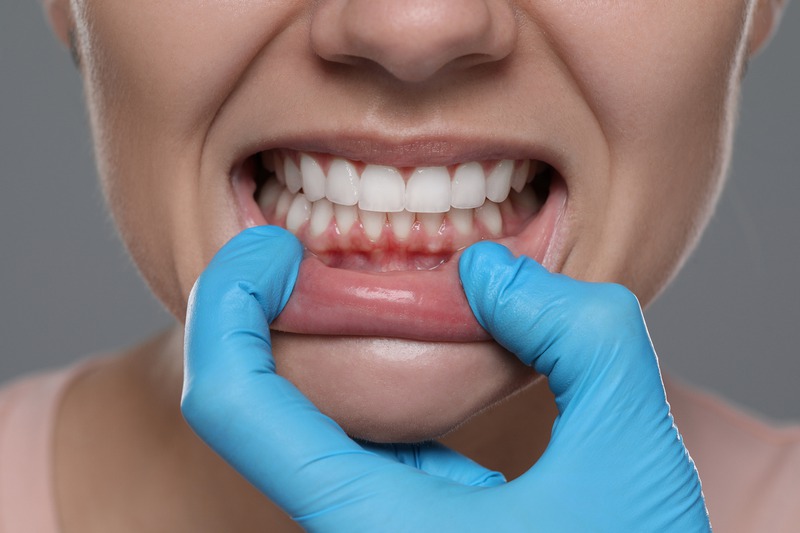Dealing with gum disease can be a daunting experience. The traditional treatments often bring forth images of sharp instruments and discomfort, leaving many looking for less painful alternatives. This is where LANAP (Laser-Assisted New Attachment Procedure) gum surgery steps in, offering a more comfortable option to tackle gum disease. If you’re wondering why LANAP gum surgery is gaining popularity, keep reading to discover its benefits and why it’s considered less painful for patients
How LANAP Works
LANAP gum surgery utilizes laser technology instead of the conventional cutting and stitching methods typical in periodontal surgery. The procedure precisely targets diseased tissue, eradicating bacteria and infected areas while preserving healthy gum tissue. This selectivity in action is one reason the pain is minimized compared to traditional methods.
Benefits of Laser Technology
Laser technology offers a gentler approach. The highly focused beam ensures that only the damaged tissue is affected, reducing collateral damage to the surrounding healthy gums. Here’s how this benefits the patient:
-
Reduced Bleeding: Lasers promote clotting, which immediately staunches excessive bleeding.
-
Minimal Swelling: By being less invasive, it leads to significantly less swelling post-procedure.
-
Faster Healing: Patients often report quicker healing times due to the precision of the laser.
Why It Feels Less Painful
The precision and control that laser affords are a game changer. Patients often feel less pain during recovery, as the procedure itself is less invasive. Unlike traditional surgery that involves cutting into the gums, LANAP gently vaporizes the diseased tissue, which typically results in less pain and discomfort.
Preserving Healthy Tissue
A key element of why LANAP gum surgery is less painful is its ability to save healthy gum tissue. Traditional surgery methods tend to impact even healthy tissue, causing widespread inflammation and pain. By contrast, LANAP zeroes in on the unhealthy parts, minimizing unnecessary damage.
Less Need for Anesthesia
With traditional gum surgeries, the use of anesthesia is necessary to manage the pain. However, thanks to LANAP’s minimally invasive nature, many patients require fewer drugs to ease discomfort. Some even skip anesthesia altogether, leading to shorter recovery times and fewer potential side effects.
Reduced Risk of Infection
LANAP significantly reduces the risk of infection. Lasers sterilize as they work, eliminating bacteria not just on the surface but deep within the gum pockets. This sterilization further aids in limiting infection possibilities, providing patients with a safer treatment experience.
Encourages Tissue Regeneration
Unlike traditional surgical techniques that might focus only on removing diseased tissue, the laser used in LANAP also stimulates the gums, promoting cellular regeneration and aiding the body’s natural healing processes. This regenerative capability is a remarkable aspect of LANAP, making it an effective choice.
Easier Recovery Process
One of the most appealing aspects of LANAP for many patients is the ease of recovery. With less tissue trauma involved, patients report lower levels of pain and discomfort. Standard recovery time with traditional gum surgery often extends to several weeks, whereas LANAP patients might be back to their regular routines in a few days.
Another benefit of LANAP is the diminishment of the need for follow-up visits. The precise nature of the surgery often means issues are resolved in the first procedure, saving patients time and reducing anxiety about recurring dental appointments.
Patient Comfort and Experience
Overall, patient experience is a vital factor when considering LANAP gum surgery. The combination of reduced pain, faster recovery, and overall effectiveness contributes to a more comfortable treatment journey, which can drastically improve the patient’s experience and satisfaction.
Considering Overall Dental Health
When making choices about gum disease treatment, it’s important to consider all aspects of dental health. Procedures like LANAP highlight the importance of integrating advanced technology for the overall well-being of dental structures. In addition to targeting gum disease, laser treatments can sometimes address other oral issues, ensuring comprehensive oral health management.
Those interested in holistic approaches to dental care, such as those practiced in a Holistic Dental Center, may find LANAP an attractive option as it aligns with the principles of reducing harm while promoting natural healing.
The Impact of LANAP on Long-term Dental Health
The treatment methods chosen can significantly impact long-term dental health. LANAP not only effectively treats gum disease but also helps maintain gum integrity, reducing problems that could arise from more invasive procedures. Patients investing in such advanced treatments can often enjoy healthier gums and teeth for years to come.
This is especially important for individuals concerned about dental cavitation, as LANAP assists in preserving the jaw and surrounding bone, maintaining structural integrity.
Choosing the Right Treatment Plan
Deciding on a treatment path involves weighing the pros and cons of each available option. While traditional methods are still valid, many patients opt for LANAP gum surgery due to its lower pain profile and effectiveness. If you’re considering addressing your gum disease, it’s essential to discuss with your dentist the best approach for you.
This is particularly true if you factor in how treatments like LANAP gum surgery integrate new technologies to enhance patient outcomes. Such technology-focused treatments allow for personalized care tailored to a patient’s specific needs and goals.
What Patients Should Know
-
Consult with a qualified dental professional to see if LANAP is right for you.
-
Understand the potential benefits and risks associated with laser gum surgery.
-
Discuss any concerns about pain management and recovery time with your dentist.
Final Thoughts
LANAP gum surgery is transforming the way gum disease is treated by providing a less painful, more effective alternative to traditional methods. With its focus on preserving healthy tissue and minimizing discomfort, it stands out as a viable choice for those seeking treatment for periodontal disease. Whether you’re exploring this option for yourself or a loved one, understanding the process and benefits of LANAP can lead to a more informed decision about oral health care.

